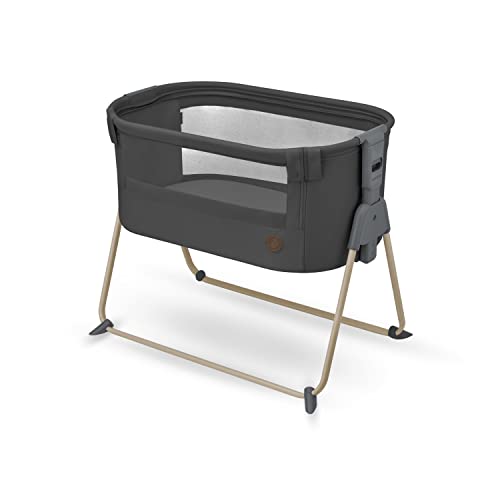It Is The History Of Cot Infant In 10 Milestones
Understanding Cot Infants: A Comprehensive Guide for New Parents
Welcoming a newborn into the world is one of life's most jubilant experiences; nevertheless, it is likewise loaded with obligations, especially concerning safety and care. The cot, or crib, is an important component in ensuring a safe sleeping environment for babies. This article aims to notify parents about the important elements of cot infants, clarifying safety, types of cots, advised practices, and much more.
What is a Cot Infant?
A “cot infant” refers to an infant that oversleeps a cot, which is a little bed specifically designed to provide a safe sleeping area for infants, normally ages 0 to 2 years. The main function of a cot is to keep infants safe while they sleep, lessening the danger of falls and guaranteeing they are safe in an included environment.
Types of Cots
When choosing the best cot for an infant, moms and dads have several alternatives to select from. Below is a detailed table outlining different types of cots available in the market:
Type of Cot
Description
Advantages
Disadvantages
Requirement Cot
A typical cot made from wood or metal, designed for babies up to 24 months.
Safe, resilient, adjustable mattress height.
Large, might take up substantial space.
Travel Cot
A portable, lightweight cot that can be easily folded.
Easy to transport, perfect for traveling.
Less sturdy than standard cots.
Co-Sleeper
A cot that attaches to the moms and dads' bed.
Promotes bonding, allows simple access for nursing.
Limited sleeping space, may not be as safe and secure.
Convertible Crib
A cot that can be transformed into a toddler bed.
Long-term use, versatile as your kid grows.
Higher initial cost, more complex assembly.
Moses Basket
A little, portable basket for newborns, usually utilized in the early months.
Lightweight, comfortable environment for newborns.
Brief life expectancy, less safe as children grow.
Security Guidelines for Cot Infants
Ensuring the safety of a cot infant is paramount. The American Academy of Pediatrics (AAP) offers numerous standards that parents must comply with when utilizing cots:
- Placement: Place the cot away from windows, drapes, cables, and lights to prevent any prospective threats.
- Mattress Fit: Ensure the bed mattress fits comfortably into the cot frame without any spaces, removing the danger of entrapment.
- Bed linen: Use a company bed mattress with a fitted sheet. Prevent toys, bumper pads, heavy blankets, and pillows to minimize suffocation threats.
- Sleeping Position: Always position the infant on their back to sleep. Learn Additional Here has been linked to a significant reduction in Sudden Infant Death Syndrome (SIDS).
- Routine Checks: Inspect the cot frequently for loose or damaged parts, and tighten or change them as needed.
Extra Considerations
In addition to the security standards, there are other factors to think about when caring for cot infants:
- Monitoring Temperature: Infants can easily become too hot or too cold. Dressing them in suitable layers and making sure the cot remains in a comfortable environment is important.
- Routine: Establishing a constant bedtime regimen can assist infants feel safe and promote much better sleep routines.
- Transitioning: As infants grow, moms and dads ought to be gotten ready for the transition from cot to toddler bed. Signs of preparedness include climbing up out of the cot or going beyond the weight limitation.
FAQs
The length of time can a baby remain in a cot?
Usually, babies can use a cot until they reach 24 months or when they can climb out separately. Constantly check the manufacturer's recommendations for specific weight limitations and safety guidelines.
Is a co-sleeper safe?
Co-sleepers can be safe when appropriately utilized, offered that they attach safely to the moms and dads' bed. Always follow safety recommendations to prevent any risks related to sleeping plans.
What kind of bed linen should be utilized in a cot?
A firm mattress with a fitted sheet is recommended. Prevent any extra bedding, including pillows, blankets, or packed animals, to make sure the infant's safety.
How can I ensure my infant sleeps easily?
Monitor the infant's room temperature, dress them appropriately for sleep, and keep a soothing bedtime regimen to promote convenience and a restful sleep.
When should I shift my child to a young child bed?
The majority of parents shift their kid to a toddler bed in between the ages of 2 and 3 years, but readiness can vary. Try to find indications such as climbing out of the cot or needing more area.
Looking after a cot infant involves understanding the specific needs of children in their early years. By choosing the appropriate cot, following safety standards, and keeping a comfortable sleeping environment, moms and dads can guarantee a safe and nurturing space for their children. As online is special, it is vital to remain informed and prepared, adapting to the private requirements of the cot infant as they grow. With the right knowledge and practices, parents can develop a safe house for their babies, making sure assurance for both parents and babies alike.
